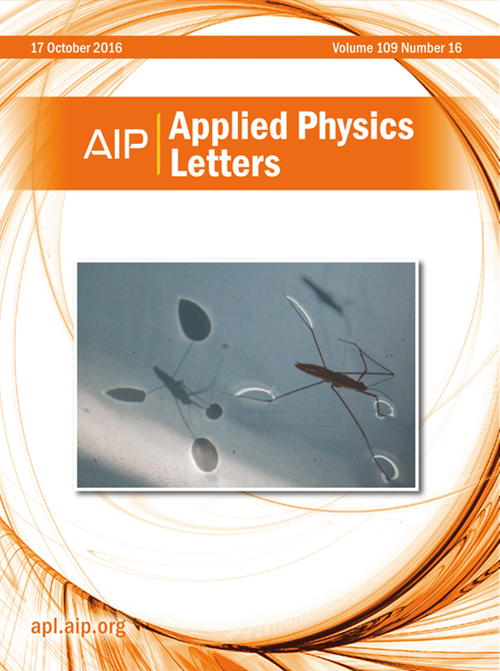喷雾溶液燃烧合成未掺杂的Ca3Co4O9:通过晶粒取向和适度织构获得高热电性能
IF 3.5
2区 物理与天体物理
Q2 PHYSICS, APPLIED
引用次数: 0
摘要
采用喷雾溶液燃烧合成法(SSCS)合成未掺杂的Ca3Co4O9,并通过火花等离子烧结(SPS)进行固结,得到的微观结构具有中等形变[(004)面最大Lotgering因子为0.35]和垂直于压制方向的强伸长、致密排列的晶粒。织构的存在主要影响所得材料的电导率,这与文献中报道的掺杂Ca3Co4O9的电导率相当。这些特征使得未掺杂的Ca3Co4O9在1050 K时的热电性能zT达到0.35,这决定了微观结构结构的重要性。该研究强调,虽然纹理有助于提高电导率,但晶粒伸长率和边界结构的协同组合是实现层状材料性能显著改善的关键,这表明优化微观结构特征对提高功能的重要性。通过这种方法获得的钴酸盐比其他方法具有优势,因为它显著减少了陶瓷生产时间,而且成本低,不需要昂贵的合金元素。本文章由计算机程序翻译,如有差异,请以英文原文为准。
Spray solution combustion synthesis of undoped Ca3Co4O9: High thermoelectric performance through grain orientation and moderate texture
Undoped Ca3Co4O9 was synthesized using spray solution combustion synthesis (SSCS) and consolidated through spark plasma sintering (SPS), resulting in a microstructure with moderate texturing [maximum Lotgering factor of 0.35 for the (004) plane] and strongly elongated, densely packed grains oriented perpendicular to the pressing direction. The presence of texture mainly influences the electrical conductivity of the obtained material, which becomes comparable with values reported in the literature for doped Ca3Co4O9. These features allowed one to achieve in the undoped Ca3Co4O9 thermoelectric figure of merit zT of 0.35 at 1050 K, which determines the importance of microstructural architecture. The study highlights that although texturing contributes to increased electrical conductivity, the synergistic combination of grain elongation and boundary architecture is key to achieving significant improvements in the performance of layered materials, demonstrating the importance of optimizing microstructural characteristics to improve functionality. Cobaltite obtained by this route has advantages over the others, due to the significant reduction in ceramic production time, as well as low cost, without the need for expensive alloying elements.
求助全文
通过发布文献求助,成功后即可免费获取论文全文。
去求助
来源期刊

Applied Physics Letters
物理-物理:应用
CiteScore
6.40
自引率
10.00%
发文量
1821
审稿时长
1.6 months
期刊介绍:
Applied Physics Letters (APL) features concise, up-to-date reports on significant new findings in applied physics. Emphasizing rapid dissemination of key data and new physical insights, APL offers prompt publication of new experimental and theoretical papers reporting applications of physics phenomena to all branches of science, engineering, and modern technology.
In addition to regular articles, the journal also publishes invited Fast Track, Perspectives, and in-depth Editorials which report on cutting-edge areas in applied physics.
APL Perspectives are forward-looking invited letters which highlight recent developments or discoveries. Emphasis is placed on very recent developments, potentially disruptive technologies, open questions and possible solutions. They also include a mini-roadmap detailing where the community should direct efforts in order for the phenomena to be viable for application and the challenges associated with meeting that performance threshold. Perspectives are characterized by personal viewpoints and opinions of recognized experts in the field.
Fast Track articles are invited original research articles that report results that are particularly novel and important or provide a significant advancement in an emerging field. Because of the urgency and scientific importance of the work, the peer review process is accelerated. If, during the review process, it becomes apparent that the paper does not meet the Fast Track criterion, it is returned to a normal track.
 求助内容:
求助内容: 应助结果提醒方式:
应助结果提醒方式:


